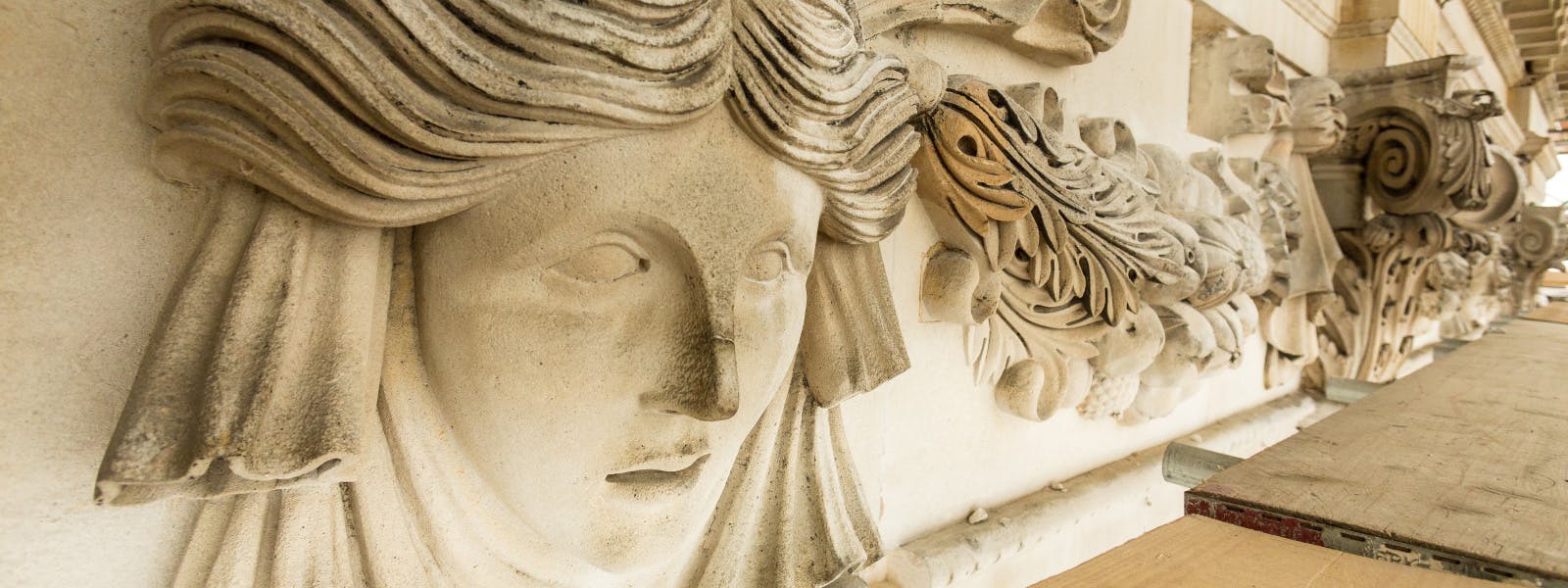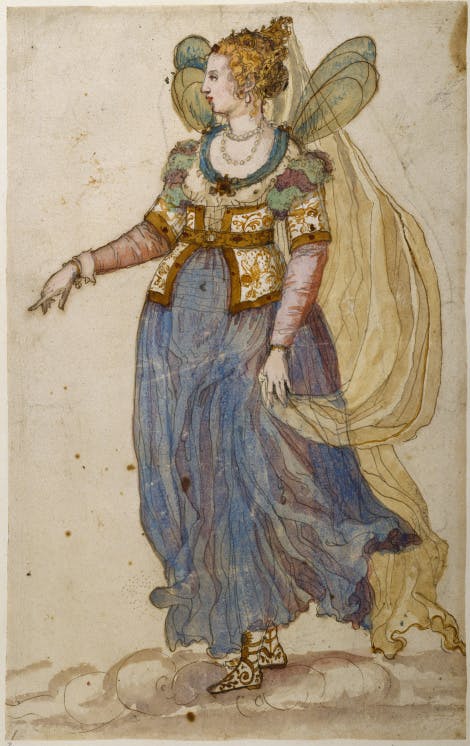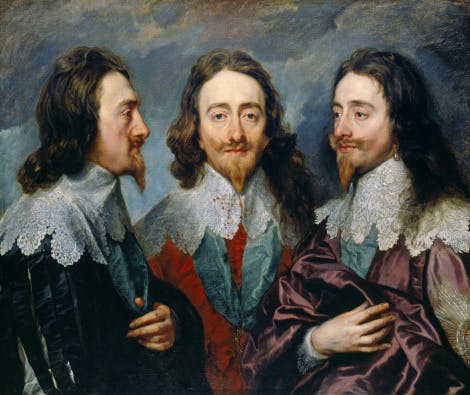Architectural highlights
At Banqueting House, the status of the interior of the building is reflected on the outside. Tap the information spots for more details.

Basement
At basement level, the exterior is faced in ‘rusticated’ stonework, with no ornamental carving. By contrast, the double-height main hall above it is faced with dressed stone, columns, capitals, balustrades, a pronounced string course separating the lower from the upper level, and a carved frieze of masks and garlands.

Centre of the façade
At the centre of the façade, the central three bays are pushed further out into the street, to create a central focus for the building. The capitals are simple Ionic ones at low level, whereas at upper level they are the opulent Composite type.

Classical frieze
The beautifully carved frieze of classical drama masks and garlands of fruit and flowers around the top of the building reflects the original purpose of the Banqueting House – as a venue for masque performances.

Weathervane
Perched on the roof is a huge wrought iron weathervane, installed in 1688 for James II, which is still in working order. The weathervane was installed to fore-warn the king of weather conditions which might prove favourable for an invasion.













